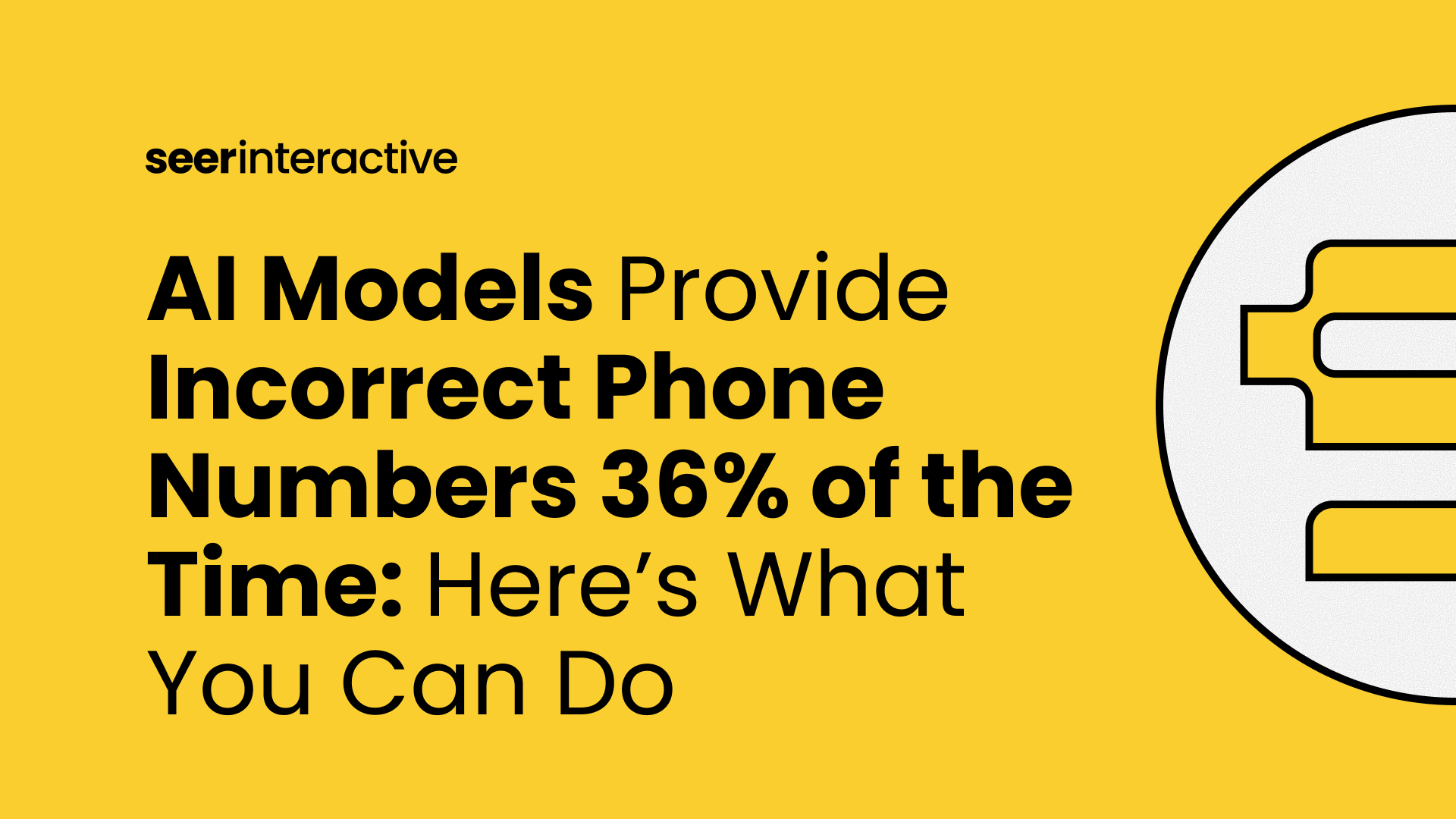Unlocking the Potential of AI for Analytics in Marketing
Have you ever seen an artists palette?
I’m sure what comes to mind is a clean oval-ish shape with small dollops of paint that have clean edges and don’t touch.
As the daughter of an artist, I can assure you that that is not the case. Artists palette’s are, simply, a mess. There are combinations of colors, textures, and variations of shade that the artist creates as short cuts to increase the efficiency of painting. Colors are combined to create new colors based off of color theory and more.
Like an artist’s palette, artificial intelligence (AI) is a tool that can help solve many business problems companies face by creating efficiencies, and more, using data and knowledge learned from customers, experiences, and data science.
In this blog we’ll explore what AI is, how AI is used in analytics, its benefits and limitations for businesses. Plus, we’ll touch on how Seer is applying AI to drive the growth of our clients.
AI for Analytics in Marketing:
AI for analytics is the process of automating much of the work that a data analyst or data science may typically do. It involves using AI, machine learning (ML), and algorithms to analyze large amounts of data to identify patterns and insights that would otherwise be hard to spot or take a long time to do so.
How can AI for Analytics help businesses?
AI for analytics can help businesses make better, data-based decisions, improve efficiency, and gain a competitive advantage. Through automation, AI can help companies reduce human error, save time, and provide reliable insights.
Before we get too far ahead of ourselves….what exactly IS AI?
What is AI?
Artificial Intelligence (AI) is the simulation of human intelligence processes by machines, especially computer systems. It involves the development of algorithms and computer programs that can perform tasks that typically require human intelligence, such as visual perception, speech recognition, decision-making, and language translation.
What is AI for Analytics in Marketing?
AI can help marketers make data-driven decisions and optimize their campaigns in several ways. AI allows us to look at large amounts of data and find patterns. At Seer that doesn’t mean 1000 keywords, that means multiple millions of keywords.
At Seer this also means that we can, at scale, look at trends of customer behavior to make more informed decisions. This can be applied to conversion rate optimization, SEO, landing page optimization, email campaign behavior analysis, customer sentiment, and so much more. The beauty of partnering with Seer is the teams ability to innovate and customize our work to adapt as technology evolves.
Our team also uses this tech to help automate some of our tasks such as data analysis, segmentation, and personalization, which can save time and resources and improve efficiency.
Finally and probably one of the COOLEST things about AI, predictive analytics, and Seer is the ability to combine multiple data streams to automate cross channel insights.
What does this mean? I’ll tell you!
AI can help unify data across marketing channels (think: SEO+PPC), that means we can identify opportunities based on a thorough understanding of the market and customer behavior, leading to insightful and profitable decisions. With these tools, we’re able to acknowledge that marketing (and our client’s customers) don’t exist in a vacuum.
Our team has done it time and time again, here are a few examples: Here’s how we drove organic traffic by 869% and uncovered $2.2MM in revenue opportunities for paid search and drove conversions by 97%. No big deal…
To sum...
The Benefits of AI for Analytics in Marketing
- More accurate and relevant insights: By analyzing large amounts of data across multiple channels allowing for insights at scale that drive revenue.
- Improved targeting and personalization: AI can personalize customer experiences by analyzing their behavior, preferences, and interests, and predict their buying decisions using vast amounts of data.
- Increased efficiency and automation: By analyzing data to identify and optimize valuable digital assets that are specific to a client’s customer data - quickly and at scale.
- Better customer ROI and revenue growth: Seer uses AI and predictive analytics to analyze and understand the value and business impact of recommendations so that they are prioritized to drive growth.
- Scalability: AI tools allow marketers to apply data models, algorithms, and solutions with increased complexity, speed, and size to create insights that are informed by a large data set and are therefore more reliable.
How does Seer use AI for Analytics?
Seer Interactive uses AI for analytics to create innovative solutions that help businesses achieve their marketing objectives. One example of this is their creation of Reverse ChatGPT, an AI-powered tool that can generate outputs based on customer input.
This tool, the Brand Sentiment Analysis, uses natural language processing (NLP) and machine learning to analyze customer input and generate responses that are tailored to their needs. This helps businesses improve their customer engagement and satisfaction, and reduce the workload on their customer service teams.
How does Seer use Predictive Analytics?
Seer Interactive used predictive analytics to optimize their clients' campaigns and improve their ROI.
One example is our team's work with a healthcare company that was struggling to generate leads and conversions. Using predictive analytics that combined data from SEO, paid media, and content marketing to improve the company's online visibility and drive more traffic to their website.
Our Analytics team was able to identify the most valuable pages on the website and use personalization to optimize them for conversions. As a result, the healthcare company saw a 50% increase in leads and a 30% increase in conversions. (Read the case study here!)
Overall, Seer Interactive's use of predictive analytics has helped them make more informed decisions, improve efficiency, and gain a competitive advantage in an increasingly data-driven and competitive landscape.
AI vs Predictive Analytics
AI and predictive analytics are two related but distinct concepts. Predictive analytics is a statistics-based method that data analysts use to make assumptions and test records in order to predict the likelihood of a given future outcome.
On the other hand, AI is the simulation of human intelligence processes by machines, especially computer systems. It involves the development of algorithms and computer programs that can perform tasks that typically require human intelligence.
The biggest difference between AI and predictive analytics is that AI is completely autonomous while predictive analytics often relies on human interaction to help query data, identify trends, and test assumptions. While predictive analytics is a subset of AI, AI is a broader concept that includes other technologies such as natural language processing, computer vision, and robotics.
Seer Interactive's use of AI for analytics also includes predictive analytics, which we use to optimize their clients' campaigns and improve their ROI. This combination allows us to create internal operational efficiencies, which allow us to spend more time developing higher level strategic insights for our clients that ultimately lead to their success and give them a competitive edge.
Challenges and Risks of AI for Analytics in Marketing
AI, predictive analytics, and machine learning all require a large pool of data to be able to operate and, more importantly, use to pull statistically significant insights from. I’m not talking a few hundred keywords - though, realistically, you may still be able to infer certain things from that data pool.
At Seer, we have a data platform, that is home to hundreds of thousands, or more accurately 8.92 million, of pieces of data across a variety of verticals and industries. Ask yourself, how many do you have?
Data security is, unsurprisingly, top of mind for Seer given the depth and breadth of the information we have access to. We take extensive steps to ensure that personally identifiable pieces of information are either excluded or protected to prevent misuse or unauthorized access.
Data bias is something that is also important to consider when analyzing data. Wil Reynolds, our founder, and CEO, wrote a blog highlighting how AI, by itself, can (and does) discriminate. We take this seriously when reviewing data - data bias can result in incomplete recommendations and insights. Women and marginalized communities tend to be underrepresented in traditional data sources, which is why it’s important to look at data that is specific to your niche and customer base. That’s where our consultants can come in and look for gaps in the data to help identify where the picture may be incomplete.
Lastly, AI is complicated. It’s a relatively new field in the public domain and requires a high level of technical understanding that can cause a barrier to entry. At Seer, we strongly believe that that shouldn’t prevent our clients from getting the full benefit and use of these tools.
Our Analytics & Insights team can help businesses address these challenges by providing AI-powered tools and technologies that can help businesses consolidate and integrate their data, automate tasks, and make more informed decisions. Seer can also provide the necessary expertise and resources to use AI effectively and ethically and ensure that businesses are complying with data privacy regulations.
Conclusion
Overall, Seer Interactive can help businesses overcome the complexities and integration issues associated with AI for analytics, and gain a competitive advantage in an increasingly data-driven and competitive landscape.
Just like an artist's palette, AI is a messy and complex tool that can bring tremendous value to businesses. By using AI for analytics and machine learning, companies can gain insights that would be hard to spot or take a long time to do so. At Seer, we use both AI and predictive analytics to help our clients make data-based decisions and optimize their campaigns - and take them to the next level.
The world of AI is constantly evolving, and it is important for businesses to stay up-to-date on the latest advancements to gain a competitive advantage. So, let's embrace the mess and take advantage of the power of AI to drive business growth and success.


